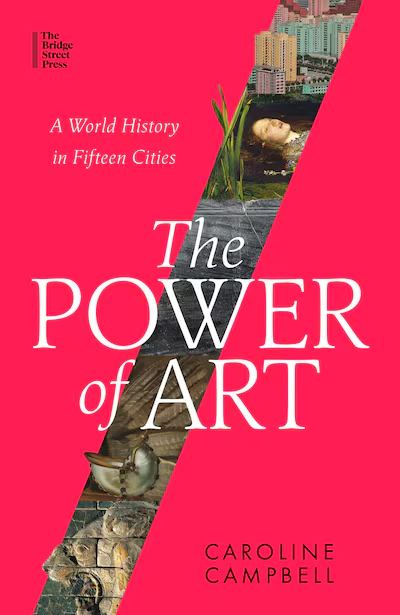Those who love art understand its power. Caroline Campbell, director of the National Gallery of Ireland is in the passionate camp, and The Power of Art aims to communicate not only art’s vitality, but its vital role in the power of those who have shaped civilisation. Civilisation is a loaded word. After all, as Campbell notes, for much of human history, Europe and North America “weren’t the centre of the world but relative backwaters”. The book, subtitled A World History in Fifteen Cities, rebalances our often myopic viewpoint, exploring art from Babylon to Kyoto, Florence to Vienna and New York to Pyongyang. It is a fascinating journey, that occasionally gets a little lost.
In her introduction, Campbell, who writes fluently and engagingly, introduces us to Michelangelo through the medium of his shopping list. The great artist didn’t confine himself to writing, but instead pictured the pasta, fish and veg that he wanted from the shops. Her quick pen sketch of his sketches brings the artist alive, as well as his often fractious relationships with his patrons. “To read most histories of art,” Campbell writes, “the reader might be forgiven for supposing that great artists weren’t human, or weren’t bound by the same constraints.” Her aim is to get away from the idea of art as following a coherent and cohesive sweep of styles, periods and fashions. That is only how we are taught to understand it later.
The subtitle of each chapter defines the character of a city at a particular time in a single word. Jerusalem is faith; Benin, community; and London in the 19th century is avarice. Curators of major exhibitions must get into the habit of finding overarching titles for their shows, but the chapter headings here are reductive. Still, a book is far more than its chapter headings, and there is much to discover here of those cities that don’t feature so heavily in the taught art histories of Europe and North America. The chapter on Jerusalem, and the wealth and the weight of its legacies of faith, is particularly poignant.
Writing a history that spans 4,000 years means a switch, at a certain point, from explorations of the architectural and artistic predilections of powerful elites to the artists and makers themselves. Thus the forces that shaped Babylon between 1800 and 323 BC are gleaned from Biblical texts, archaeological exploration, and the inscriptions commissioned by the likes of Cyrus the Great, who gave himself the title King of the Universe. As time goes on, more can be known, here reconstructed through the artefacts and writings that kings, such as Nebuchadnezzar, left behind.
READ MORE
Campbell is an even-handed and wise writer, but you sometimes wish for a more forceful opinion. Concluding the chapter on Benin, Campbell discusses the Benin Bronzes currently in the British Museum. She asks how museums can “maintain their moral equilibrium if their collections have been formed by European colonialism?” Her conclusion, that “these questions are profound, hard to answer, and [that] there are many points of view”, dissipates the weight of her earlier descriptions of the Punitive Expedition of 1897, which was, “even by the standards of 19th-century European colonialism […] unusually cruel.”
Coming closer to modernity, the chapter on New York between 1929 to 1970 is subtitled “rebellion” and the narrative, which has been wavering as time moves on, between rulers and makers, comes down on the side of the artists, here including Andy Warhol, Jackson Pollock and Helen Frankenthaler. So far, so fascinating; but in looking at the story of cities through the lens of art and objects, you cannot separate the artists from the forces with the power to promote it. What comes into prominence, and what survives by being financially supported, commissioned and collected is sadly less about the artists, and more about those with the means of money and control.

In Campbell’s New York chapter, the city is alight with possibility. European émigrés have come, fleeing the carnage of the second World War. There is an ethnic mix, and while there are huge disparities between rich and poor, there are, crucially, affordable places to live. The powerful shapers here are named as critics, Clement Greenberg and Harold Rosenberg. No mention is made, however, of the CIA and their covert funding of American abstract expressionism, disputed for decades but more recently confirmed, by institutions including the Guggenheim. Rather than “rebellion”, a better chapter heading might have been “manipulation” or even “cynicism”.
While the narrative loses its way in New York, it finds it again in the concluding chapter on Pyongyang, which is a fascinating exposition of the uses of art and architecture to amplify control. “Art,” concludes Campbell, “is by no means an unequivocal power for good.” As an ultimate expression of human inspiration and ingenuity, art reflects, and is used as a tool by, the very best and the very worst of us all. She ends with a plea to look more deeply, and to love art more. That part is unarguable.














